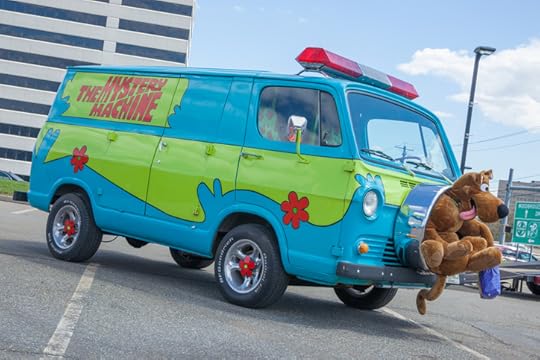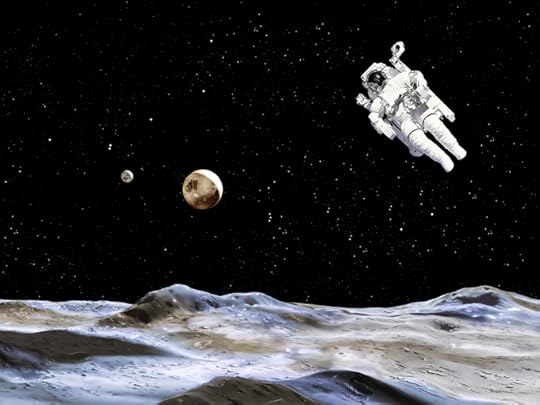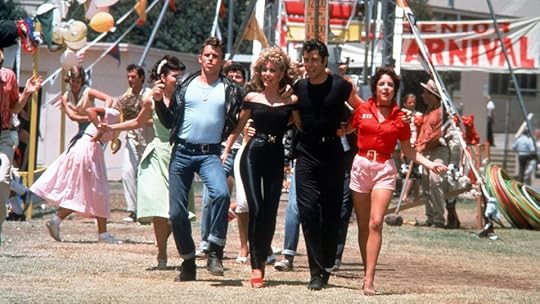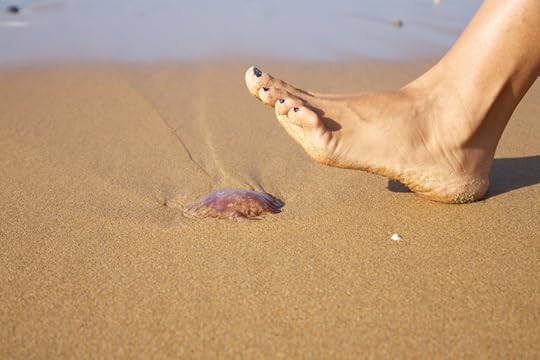Bathroom Readers' Institute's Blog, page 37
July 30, 2018
Viva Le Tour de France!

July was a big month for French sports. Not only did France just win the World Cup, but they hosted another popular event in the Tour de France. Let’s cycle through some trivia about the biggest thing on two wheels.
21 stages
The riders don’t race the whole thing all at once, because that would probably kill them. Instead, it’s broken down into 21 separate stages which covers 2,082 miles.
Length can vary
The route isn’t always the same, however, which means the length can vary. In 1926, for example, the Tour ran a punishing 3,570 miles. The 2017 tour covered about 2,220.
The elite
It truly is an elite cycling event. In 2018, only nine teams comprising 80 riders started the Tour.
42,000 water bottles
Those 80 guys drink a lot of water and have to eat a lot. They’ll go through about 42,000 water bottles in total, and each rider will burn about 5,000 calories on every stage.
800 tires
The race is hard on bodies and bikes—about 800 tires will be used throughout the Tour.
Alcohol is banned
More wine? Riders used to routinely drink a lot of alcohol during the race. Reason: It numbed the pain that comes from endlessly riding a bicycle. Organizers banned alcohol in the 1960s because it could be considered a stimulant.
Maillot jaunt
The active leader in the race gets to wear a prestigious “yellow jersey” or maillot jaunt. It’s been a tradition since the early years of the race—in 1919, French newspaper L’Auto sponsored the tour, and since it printed on yellow paper, the yellow jersey was a nice promotional opportunity.
Other jerseys
There are other, less famous jerseys, too. The best-performing rider under 25 gets a white one, and a polka-dotted garment goes to the rider with the best overall time in the mountain stages.
The closest race ever
Closest Tour de France ever: In 1989, Greg Lemond of the U.S. beat French rider Laurent Fignon…by eight seconds.
Who won the most
Who has won the Tour the most times? Technically, not Lance Armstrong. He won every year from 1999 to 2005 but those were vacated in 2012 due to his use of performance enhancing drugs. That means there’s a tie for most wins. Jacques Anquetil and Bernard Hinault, both of France, have five wins each.
World War cancellations
The Tour has run every year since 1903, except for the 11 times it was cancelled because of the two World Wars.
The post Viva Le Tour de France! appeared first on Trivia Books and Facts | Uncle John's Bathroom Reader.
July 20, 2018
The Curse of Honey Bears

The most famous “curse” in sports—the one that seemingly prevented the Chicago Cubs from winning a World Series in more than a century—has been lifted. Here are some other, lesser-known sports curses.

The Curse of the Honey Bears
Emboldened by the extreme popularity and success of the Dallas Cowboys Cheerleaders in the 1970s, many NFL teams introduced their own scantily-clad support squad. One of those teams was the Chicago Bears, with owner George “Papa Bear” Halas establishing the Honey Bears in 1977. Halas died in 1983, and his daughter, Virginia Halas McCaskey, inherited the team. She found the idea of a cheerleading squad embarrassing and sexist, and wanted to get rid of them…but the Honey Bears had a contract good through the 1985 season. During that season, the Bears happened to go 15-1 and won the Super Bowl (in a 46 to 10 blowout) for the first time in franchise history…as well as the last. The story goes that the aggressive loss of the Honey Bears left a curse on the Bears organization, which has only been back to the Super Bowl once, in 2006…where they got beat by the Indianapolis Colts.
The Curse of Joe Namath
Joe Namath was the most famous and popular athlete of his day, which would be the late 1960s. Both handsome and self-assured enough to model pantyhose on television (really), he also led the New York Jets to its first—and so far, only—Super Bowl title, let alone appearance—in 1969. That led some hardcore, long-suffering Jets fans to spread the absolutely bizarre urban legend behind why the team is “cursed” from ever winning another Super Bowl. These fans say that prior to Super Bowl III, Namath was so desperate for the underdog Jets to win that he made a pact with the devil—if the Jets win this time, they never have to win again. The Jets took the Super Bowl over the Baltimore Colts 16 to 7, and have since been to only four conference title games, losing all four times.
The Curse of St. Patrick
Word association game: When we say “professional hockey,” what country do you think of first? Canada, right? After all, it’s one of two official sports of our neighbor to the north, and it’s where the NHL and the drive for the Stanley Cup originated. Today, the NHL is comprised of 31 teams, including seven from Canada, and yet it’s been 25 years since a Canadian team won the Stanley Cup. That went down in 1993, when the Montreal Canadiens defeated the Los Angeles Kings four games to one. Canadiens goaltender Patrick Roy was named the MVP of the playoffs en route to helping his team win the Cup for a record twenty-fourth time…and currently not only its last, but the last for any team north of the border. Obviously, there’s a curse afoot. In 1995, more than two years after the Canadiens won the Cup, the team hired coach Mario Tremblay—who didn’t get along with Roy. (Back when both men were players, Tremblay made fun of Roy’s French-Canadian accent.) Early in Tremblay’s tenure, the Canadians suffered their biggest loss ever, an 11 to 1 loss to the Detroit Red Wings. Rather than pull Roy, who was clearly having a bad day, from the goal early in the game, Roy believes Tremblay kept him in to humiliate him. Roy was so mad, he asked to be traded, and four days later, he was sent to the Colorado Avalanche…who won the Stanley Cup at the end of the season. “The Curse of St. Patrick” is why the Cup has remained in America ever since.
The post The Curse of Honey Bears appeared first on Trivia Books and Facts | Uncle John's Bathroom Reader.
July 19, 2018
On Tonight’s Episode…Some Other Show

Potential first episodes of TV shows are called “pilots.” Sometimes a TV show will try to launch a spinoff via a “backdoor pilot”—a sample of a new series that airs as an episode of the mother show. Successful backdoor pilots: NCIS from JAG, and Private Practice from Grey’s Anatomy. Unsuccessful ones? These.
Tales from Springfield
One of the most popular episodes of The Simpsons broke the form of a typical episode. Instead of one or two main stories based around the Simpson family, “22 Short Films About Springfield” told, well, 22 short stories about various residents of Springfield. (For example, Principal Skinner has Superintendent Chalmers over for a disastrous lunch, and Moe gets robbed immediately after Barney pays down his enormous bar tab.) The episode almost led to a Simpsons with less Simpsons, a show comprised of sketches called Tales from Springfield. The Simpsons writing staff pulled the plug once they realized they couldn’t produce two shows at the same time.
The Daleks
When the BBC’s long-running Doctor Who launched in the mid-1960s, the breakout characters were the bad guys—the Daleks, an army of angry, robot-like aliens. Who writer Terry Nation, who created the characters, wrote a pilot for a Dalek-based show in which they went to war with the “Space Security Service.” It aired in 1965 under the title “Mission to the Unknown.” Nation’s bosses at the BBC decided that less was more with the Daleks, choosing instead to have the show use the characters sparingly. His pilot was rejected, but it was made into an audio play in 2010.
Witchright Hall
A series about the goings-on at a special boarding school for young people with magical abilities? Sounds like a can’t-miss smash hit…except that we’re not talking a Harry Potter TV show. In 2001, the sitcom adaptation of the comic book Sabrina the Teenage Witch introduced a wayward teen witch, cousin to Sabrina, who gets shipped off to Witchright Hall, a reform school for the bad and magical. Network WB declined to turn the episode into a series…and canceled Sabrina not too long after to boot.
Cavender is Coming
There aren’t too many funny episodes of The Twilight Zone. Actually, this is about the only one—it even has a laugh track. This 1962 episode of Rod Serling’s spooky anthology series was a potential comedy about a wings-seeking angel named Cavender tasked with helping humans improve their lives. His first assignment: a woman named Agnes Grep, a klutz with a messy life played by a young Carol Burnett.
Sister Michael Wants You
In the 1990s, the crime procedural Diagnosis Murder, about a doctor that solved crimes, marked Dick Van Dyke’s return to television. Executive producer and former network boss Fred Silverman asked writers to create at least one (failed) backdoor pilot every year. Some of those included a cop show called The Chief starring ex-Hunter star Fred Dryer. The most interesting would have to be the episode titled “Sister Michael Wants You” in 1993, a set-up for a light-hearted action series in which Delta Burke of Designing Women portrayed a crime-fighting nun.
The post On Tonight’s Episode…Some Other Show appeared first on Trivia Books and Facts | Uncle John's Bathroom Reader.
July 18, 2018
Scoobert-Doo, Where Are You?

Okay, they don’t have “real” names because they’re fictional characters. These are merely the full, given names of fictional individuals you may have known only by their nicknames that you didn’t know were their nicknames.
Scoobert
Of the Mystery Inc. gang on Scooby-Doo, Where Are You? the two most notable characters were known by nicknames. Shaggy’s real name: Norville Roberts. Scooby-Doo’s real name? Scoobert.
Moaning Myrtle
Senator Elizabeth Warren isn’t the only famous Elizabeth Warren. Moaning Myrtle—Uncle John’s favorite character in the Harry Potter series, because she’s a ghost who haunts a bathroom—was once known as Myrtle Elizabeth Warren.
Peppermint Patty
Peppermint Patty is the Peanuts character who nicknamed Charlie Brown “Chuck.” Her own nickname obscures her full name, which is Patricia Reichardt. (Although in some of the Peanuts TV specials, her name is Priscilla…which doesn’t make sense because “Patty” isn’t short for “Priscilla.”)
Cap’n Crunch
Before he enlisted in, uh, the cereal navy we suppose, Cap’n Crunch was apparently just a regular guy named Horatio Magellan Crunch.
Avengers
Of the Avengers, you probably know that Iron Man’s real name is Tony Stark and Captain America is also known as Steve Rogers, but Hawkeye’s actual name is a little obscure. It’s Clint Barton.
Mr. Peanut
The name is Bartholomew Richard Fitzgerald-Smythe…or Mr. Peanut to you.
Winnie the Pooh
Christopher Robin’s best friend in the Hundred Acre Wood isn’t really Winnie the Pooh—his proper name is Edward Bear.
Minnie
Minnie is a nickname, but what’s it a nickname for? As far as Minnie Mouse is concerned, it’s a shortening of Minerva.
Guy Smiley
Remember Guy Smiley, the perfectly named game show host on multiple game show parodies on Sesame Street? It turns out that name is too good to be true—he was “born” Bernie Liederkrantz.
Cookie Monster
Before his most notable characteristic (or mania) came to define him, Cookie Monster was just a regular monster known as Sid.
Casper the Friendly Ghost
Casper the Friendly Ghost’s full name is Casper McFadden. (Or at least it was.)
Milburn Pennybags
The mustachioed gentleman from Monopoly? His name is Milburn Pennybags.
Wizard of Oz
Pay no attention to the man behind the curtain, Oscar Zoroaster Phadrig Isaac Norman Henkel Emmannuel Ambroise Diggs…or “the Wizard of Oz.”
The post Scoobert-Doo, Where Are You? appeared first on Trivia Books and Facts | Uncle John's Bathroom Reader.
July 17, 2018
Get On the Space Ark!

While President Trump has floated the idea of a “Space Force,” an organization is actively taking a different approach to the cosmos—they’re going to live there.
Earth’s got problems
Earth is a wonderful place to live—well, technically speaking, it’s the only place to live, as far as we know. But this big blue and green rock does have a few problems. For one thing, it’s overpopulated, and as a result, we’re increasingly stretched thin on life-sustaining resources such as food and water. This is to say nothing of widespread pollution, how we don’t know what to do with our ever-growing garbage load, and the ever-present threat of war and other divisive political factors.
The nation of Asgardia
Leaders of the nation of Asgardia think they might have the solution. If you’ve never heard of Asgardia, that’s because it’s a brand new country—only founded in October 2016—and it’s actually not an official nation recognized by the world community yet. But its 200,000 avowed “citizens” are probably the most extremely forward-thinking community on Earth.
Goals of Asgardia
Asgardia’s aims are few, but lofty. 1) Amass a population of 150 million citizens (which would make it about the size of Russia). 2) Put all those people on “space arks” powered with artificial gravity and other man-made systems. 3) Then Asgardia would be the first space nation, allowing earthlings to live permanently away from Earth, without all that hassle of finding inhabitable planets, traveling to them, and then colonizing them. Timeline for all of this: Internet-access enabling satellites in orbit within five years, and a launch of those space arks within 15 years. (They also want to establish a moon colony within 25 years.)
The first space nation of the united humankind
At the end of June 2018, Asgardia inaugurated its first head of nation, officially known as the Head of Nation, Igor Ashurbeyli, a Russian-born engineer and businessman. “This day will certainly be recorded in the annals of the greatest events in the history of humankind,” Ashurbeyli said in his inaugural speech to a few hundred people at Hofburg, once the imperial palace of Vienna. Ashurbeyli claims that Asgardia, with its certified constitution and an elected parliament of like-minded individuals, have established “All branches of government.” That led him to declare Asgardia “the first space nation of the united humankind.”
Norse mythology
The name makes perfect sense – it’s based on Asgard, the sky world from Norse mythology rendered in realistic detail in the recent Thor movies. None of its population is centralized, but maintain “dual citizenship” with the 200 countries where they actually live. (Asgardian leaders point out that this is more than the U.N.’s 193 member states… meaning they’re more of a united nations than the united nations.)
How to become a citizen
Interested in becoming a citizen of Asgardia and/or living in space some day? All you have to do is register online. It’s free, although annual membership in the nation costs 100 euros ($116). Ashurbeyli says his country is especially looking to attract the world’s most “creative” 2 percent, and that in the future they may institute selection procedures and an IQ test.
The post Get On the Space Ark! appeared first on Trivia Books and Facts | Uncle John's Bathroom Reader.
July 16, 2018
Grease is the Word

The ‘50s-set movie musical Grease theaters in 1978, and it became a blockbuster and an instant classic. As Rizzo might say, “there are worse things you can do” than read an interesting fact or two…about Grease.
Up for Sandy
Up for the role of Sandy: Carrie Fisher from Star Wars, rock star Linda Ronstadt, Susan Dey from The Partridge Family, and Marie Osmond…who almost got the part, but took herself out of the running because she objected to Sandy’s “transformation” into a leather-clad temptress at the end of the film.
Not Australian
In the original Broadway version, Sandy isn’t Australian. That was a change made to make acting easier for Australian Olivia Newton-John, who got the part based on her singing voice.
A brand new song
Also accommodating Newton-John: a brand new song was written just for her. After filming ended and producers started putting the movie together, they thought they needed a huge solo ballad for their female lead. “Hopelessly Devoted to You” was quickly written, and Newton-John filmed singing it. Good move: It earned an Oscar nomination for Best Original Song and hit #3 on the pop chart.
Casting near-misses
The role of Danny Zuko was offered to the TV’s hottest actor of the late ‘70s: Henry Winkler, a.k.a. Fonzie on Happy Days. He turned it down out of a fear of typecasting…as Danny and Fonzie were basically identical characters.
Other casting near-misses: Steven Ford—son of President Gerald Ford—got stage fright after being cast as Sandy’s dim-bulb boyfriend Tom; the studio nixed producer Allan Carr’s ideas to cast artist Andy Warhol and adult film star Harry Reems as Rydell High teachers; and “Greased Lightnin’” was almost performed by the Beach Boys (even though Grease takes place a few years before that group got popular).
No A/C
The big televised dance sequence was filmed at a real school…with no air-conditioning. Temperature in that gym: about 116 degrees.
Well past the teen years
All of the actors who played teenage characters in Grease were well past their teen years in real life. Their ages at the time of filming: Kelly Ward (Putzie) and Dinah Manoff (Marty) were 21; John Travolta (Danny) was 23; Didi Conn (Frenchie) was 26; Jeff Conway (Kenickie) and Barry Pearl (Doody) were 27; Olivia Newton-John (Sandy) was 29; Jamie Donnelly (Jan) was 30; Michael Tucci (Sonny) was 31; and Stockard Channing (Rizzo) was 33.
The Elvis connection
This is spooky: Elvis Presley turned down the role of fantasy advice giver Teen Angel, but his presence loomed large in the ‘50s, so he merits a mention in the film—during “Look at Me, I’m Sandra Dee,” Rizzo sarcastically sings “Elvis, Elvis, let me be, keep that pelvis far from me!” In the stage version, that lyric refers to Sal Mineo, but Grease filmmakers changed it on account of the actor’s murder not long before production began. Still, they wound up shooting this scene on August 16, 1977—the day the King passed away.
Grease 2
There’s an official sequel, Grease 2, but that was producers’ second choice at a continuation. Paramount Pictures briefly toyed with a summer school-set sequel called, well, Summer School.
The post Grease is the Word appeared first on Trivia Books and Facts | Uncle John's Bathroom Reader.
July 12, 2018
Let’s Go, Socceroos!

There are some big differences between soccer and the more popular-in-America sports—the game clock counts up, and the “field” is called the “pitch,” for example. One similarity: colorful (if informal) team nicknames. Here are some of the best national team nicknames from around the world.
Clockwork Orange
Orange is the national color of the Netherlands (and its royal family, on account of William the Orange), as well as the shade of the national team’s jerseys. The “Clockwork” part was adopted in the ‘70s, when their method of play called “Total Football,” took off, which included highly precise passing techniques…in other words, the team played “like clockwork.”
Three Lions
One of the best-known names, the English team’s nickname is a reference to the three lions depicted on the country’s coat of arms…as well as the squad’s official crest. The relationship between England and lions goes back to the 12th century reign of King Richard I, or “The Lionheart.”
Socceroos
It’s a portmanteau, or combination of “soccer” and “kangaroos.” An Australian journalist coined the term in 1967, combining when the national soccer team from the homeland of kangaroos went on an exhibition game tour.
The Pirate Ship
Greece hosted the Euro 2004 tournament, in which all the national teams of Europe squared off. During the lavish opening ceremonies, the Greek hosts brought out a huge prop pirate ship, or piratiko. Later in the tourney, a Greek TV commentator said that the local team could eke out a victory only by “stealing one,” or if they were to “become pirates.” (And Greece did, upsetting Portugal to win the whole thing.)
Reggae Boyz
Reggae came from Jamaica, and so the national team proudly calls itself the Reggae Boyz. (For what it’s worth, the Jamaican women’s national team calls itself the Reggae Girlz.)
Little Canary
The soccer-dominating Brazilian national team is known as “Canarinho.” Translated from Portuguese it means “Little Canary,” as the squad wears canary yellow jerseys.
El Tri
That’s the nickname for Team Mexico, and it’s an abbreviation of el tricolor, or “the three colors.” Those colors are red, white, and green—the colors of Mexico’s flag and its jerseys.
Les Elephants
“The Elephants” is certainly an intimidating sports team name, but in its use by the national team of the Ivory Coast, it’s a little dark. It refers to the country’s healthy elephant ivory trade.
Team of the Five
That’s the English version of Portugal’s nickname, Seleccao das Quinas. But wait, there are 11 players on the soccer field at a time. What gives? The team’s crest is adorned with five mighty shields.
The post Let’s Go, Socceroos! appeared first on Trivia Books and Facts | Uncle John's Bathroom Reader.
July 11, 2018
Summertime, and the Myth Debunking is Easy

There are certain things we’ve been told our lives—and each successive year—about living it up in the summer. Uncle John took some time out of his busy seasonal schedule of grilling hot dogs and catching waves to hit you with some truth.
There’s a surefire way to “relieve” a jellyfish sting
Jellyfish are mysterious, hypnotic creatures, and, if you inadvertently get too close to one when wading in shallow waters on an ocean beach, it will sting you, although probably not on purpose. You just happened to encounter it as it was swimming by, and came into contact with Its tentacles, studded with nematocysts, or tiny, venom-filled barbs that poke human skin and release toxins underneath. That leads to instant pain and a burning sensation. What can be done to relieve that awfulness? According to conventional wisdom, urinating on it should do the trick. There is no scientific basis to this. Quite the opposite, in fact. Urine is loaded with electrolytes and salts, which could intensify the pain. What does work? A rinsing of the stung area with saltwater (which is right there at the beach) or with vinegar. (Tylenol helps, too.)
Mayonnaise turns bad in the sun
Everybody probably has a story from their family history about a Fourth of July cookout or church picnic that ended in gastrointestinal disaster because somebody ate potato salad that had been left outside too long. The actual culprit: the mayonnaise in the dish went bad. While it’s not wise (or appetizing) to eat hot potato salad that’s been baking in the sun all day, it’s probably not that unhealthy. Or at least it’s not anymore. Those stories about people getting sick mostly stem from the days when people made their own mayonnaise and used it in their potluck contributions. Today, commercial mayonnaises are more than just an emulsion of egg yolks, oils, and acids—they’re also loaded with preservatives to prevent picnic mishaps.
It’s important to wait 30 minutes after eating before swimming
This one is burned into the collective consciousness. Swimming is such a rigorous activity on the muscles, that you must wait 30 minutes (or 45, or 60) after eating before you hit the water. If you go swimming too soon after eating, you could get a muscle cramp…and drown. The logic: Your digestive tract needs blood to process food, and if that blood isn’t going to your arms and legs, you can’t swim correctly. It’s not so much a myth so much as it is wildly overstated. Yes, the body does need a bit of extra blood to help with digestion, but not that much, and only for a few minutes—not enough to prevent your limps from doing their thing. Swimming too soon after eating may result it, at worst, a very minor and fleeting muscle cramp.
The post Summertime, and the Myth Debunking is Easy appeared first on Trivia Books and Facts | Uncle John's Bathroom Reader.
July 9, 2018
The Most Commonly Stolen Things in America

Billions of dollars’ worth of stuff is swiped from stores, other businesses, and individuals every year. Here’s what thieves grab the most.
Commonly swiped
According to the annual National Retail Security Survey, which polled more than 80 retailers in 2016 (the last year for which data is available), the most commonly swiped items from grocery and drugstores are some of the most expensive things you’d find in those stores: meat, razors, baby formula, cosmetics, and alcohol.
Cheese?
However, a larger, worldwide survey of 250,000 chain stores conducted by the Center for Retail Research in the United Kingdom, discovered that the most widely stolen item from stores across the globe is cheese. Nearly 5 percent of all cheese placed on store shelves is reportedly ultimately shoplifted.
Car theft
The National Insurance Crime Bureau monitors car thefts in the United States. According to that agency, the most commonly stolen car in America is the 1997 Honda Accord. Second-most commonly stolen car in America: the 1998 Honda Accord. (Those two account for most of the 100,000 or so Accords stolen in 2016.)
Hotel theft
Not counting all those miniature soaps and bottles of shampoo and conditioner—which they kind of expect you to take home—hotels say the items people make off with more than anything else aren’t the bathrobes. They take silverware from the room service tray, sheets off the bed, and even the batteries out of the TV remote control.
At the office
In a survey conducted by the now-defunct office supply chain Office Max, the item employees take more than any other: pens and highlighters. 82 percent of respondents owned up to grabbing at least one writing utensil from their workplace.
Scrubs
While hospitals have to deal with patients walking away with bed linens and towels (ew!), the one item that disappears the most are scrubs…which employees such as nurses and doctors simply take home and never return.
Home burglers
According to home security experts, when a burglar breaks into a home, they’re looking to get in and out quickly, of course, and so they historically tend to go for the same items: cash, jewelry, prescription drugs, and small electronics like phones, cameras, and laptops.
The post The Most Commonly Stolen Things in America appeared first on Trivia Books and Facts | Uncle John's Bathroom Reader.
July 6, 2018
Time to Powder Your Nose?

Here at BRI headquarters, we’re not all that ashamed to mention the bathroom, of course, but for hundreds of years, the more polite among us have used a number of euphemisms to refer to Uncle John’s favorite room. Here are the origins of the most famous ones.
The powder room
Today, liquid and powdered makeup are common, but in the 19th century and early 20th century, foundation was available only in powdered form. A woman might need to touch up her makeup while out in public, and the place where she could do that was a bathroom. The ladies’ room came to be known as the “powder room,” because needing to check one’s appearance was seen as a much more polite reason for stepping out than, say, other things one does in the restroom. Fancier buildings, like hotels and restaurants, even had vanities and chairs where women actually could “powder their nose.”
The head
This one originates in the Navy—and it’s still common slang onboard naval ships. Back in the early days of the U.S. Navy in the 1800s, the place where sailors would do their business was placed all the way at the front of the ship, near the bowsprit, the part of the ship where the figurehead was fastened to the hull. Another word for “front” is “head,” and the nickname stuck.
The loo
The origins of this extremely popular British slang term for a bathroom are shrouded in mystery, with linguists offering up a lot of theories. Some say that the English used to euphemistically refer to the bathroom as “Room 100,” and that “1-0-0” looks like the letters “l-o-o.” It could also come from the French “l’eau,” which means “the water.” However, it first appeared in print in 1922 in James Joyce’s novel Ulysses. A character asks, “O yes, mon loup. How much cost? Waterloo. Water closet.” That means Joyce invented it, or heard it on the streets of Dublin, a scene he tried to re-create in exacting detail in Ulysses.
Go see a man about a horse
Dating to the 1860s, this phrase—or its variant, “go see a man about a dog”—was something you might say to explain a need to suddenly depart. It originally and literally applied to a horse or dog: It was a euphemism said when one needed to go bet on a horse race or a dog race. It’s also been widely used to conceal other actions, that, like betting, might be considered slightly seedy, such as going to get a drink…or needing to use the bathroom.
The post Time to Powder Your Nose? appeared first on Trivia Books and Facts | Uncle John's Bathroom Reader.












